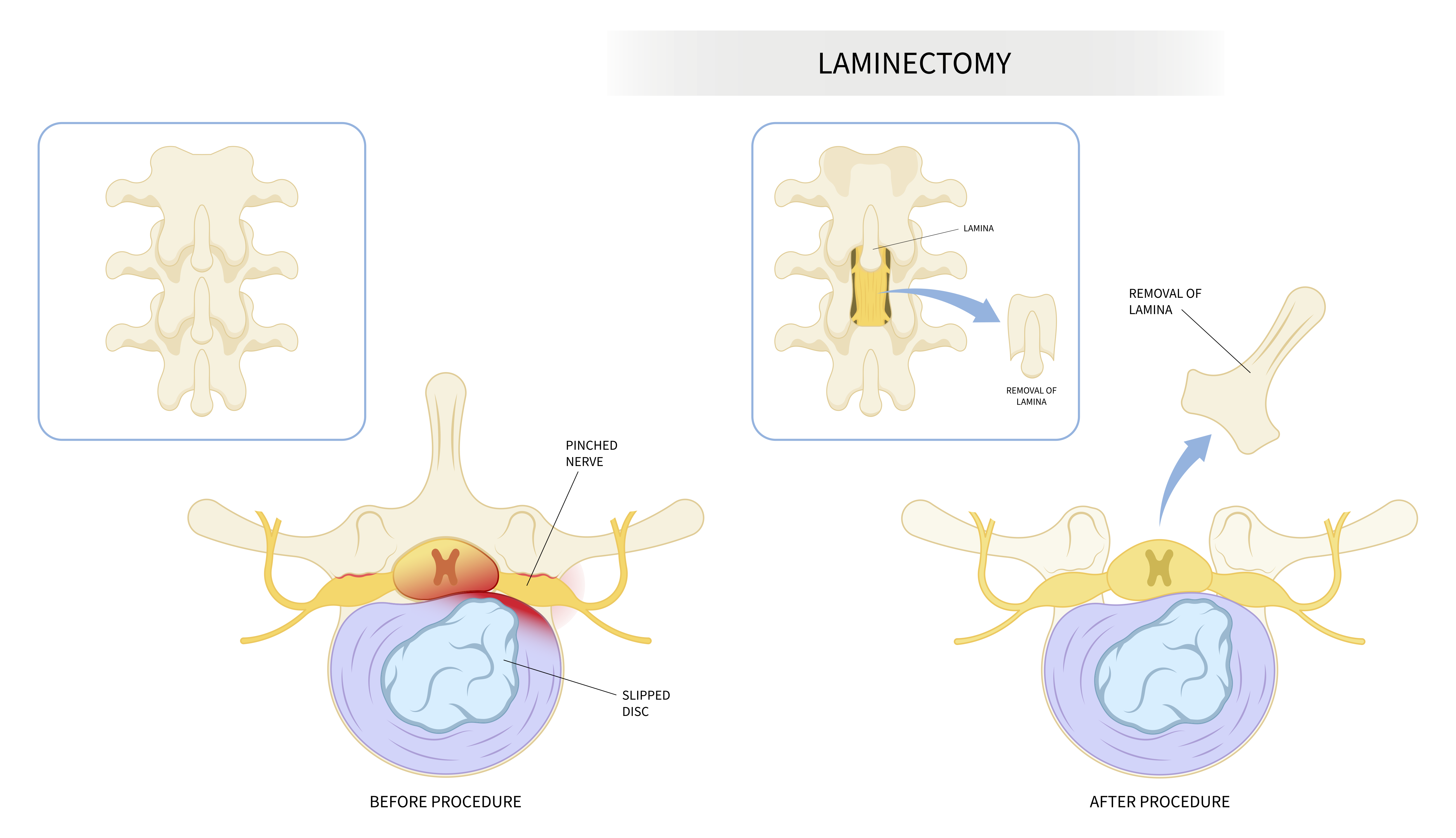
Posterior cervical laminectomy and instrumented fusion is a procedure offered to treat arthritic conditions of the spine (spondylosis), herniated disc, or cervical stenosis that cause pressure on the spinal cord (cervical myelopathy) and/or nerve root(s) (cervical radiculopathy). The procedure involves approaching the spine from the back of the neck (posterior), relieving pressure off the spinal cord by removing the lamina (roof of the spine) (laminenctomy), and holding the spine together using appropriate implants (e.g., screws and rods) while the operated segments of the spine heal and fuse together (instrumented fusion).
Appropriate patients who may benefit from this type of surgery are those who continue to experience debilitating pain despite non-operative treatments, those who have worsening neurologic symptoms, or those with spinal instability (e.g., fracture) that require surgical stabilization.
This is a fusion operation; therefore, patients are encouraged to wear a neck brace after surgery while the spine heals. Patients often experience immediate relief of pain following surgery, and once recovered, can expect to return to normal activities of daily living.
Case Presentation
This 74-year-old woman came to see Dr. Cho with difficulty buttoning shirts and counting coins, as well as trouble walking to the point that she eventually became wheelchair bound. MRI showed severe degeneration of her cervical spine (spondylosis) with spinal cord compression (cervical myelopathy) and bruising (red arrow). She eventually underwent a successful posterior cervical laminectomy and instrumented fusion with significant improvement in her neurologic function. She is now able to walk normally and has regained full function of her hands.
